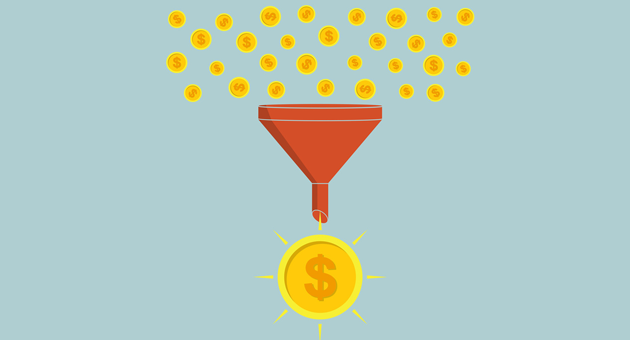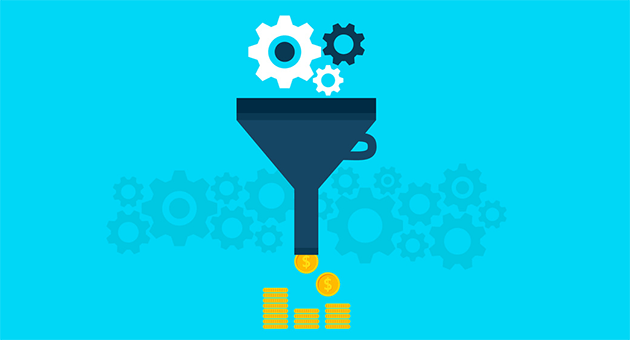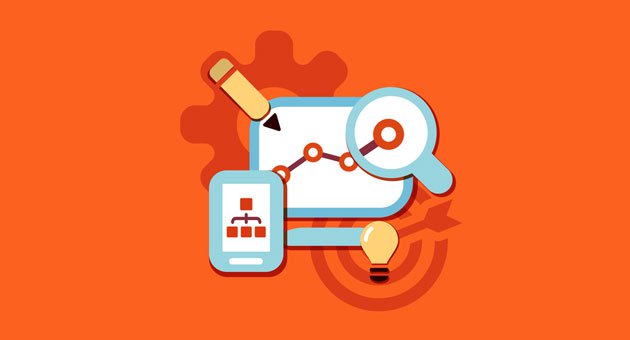
Do you know the meaning of these acronyms: CPM, CPC, CPL, CPA, and CPI? If you have to create paid campaigns on the Internet, this article is for you.
In today’s digital world, if you work on the internet, you have a website, a blog, an online store or at least professional profiles in different social networks. Of course, one of our primary goals is to become known or to be seen, to improve our results.
If you have a constant presence on the internet, your visitors will trust in your brand or product, and that means that you will be able to close the long-awaited deal (they will buy your product or hire your services).
You just need to have basic knowledge in digital marketing to know that the organic reach of everything you publish in the cyberspace is very limited. Social networks increasingly limit this type of content to force you to pay for ads to advertise your business, your brand, your products or your services.
If you want to stand out on social networks, you have no choice but to open your wallet and start paying for advertising campaigns on diferente channels.
- 1 · Today you will understand the meaning of all these more technical terms that marketers use.
- 2 · What is CPM?
- 3 · In what situations is it worth working with CPM?
- 4 · What is CPC?
- 5 · Why work with CPC?
- 6 · What is CPL?
- 7 · Why not just work with CPL?
- 8 · What is CPA?
- 9 · How does CPA work?
- 10 · What is CPI?
- 11 · Why work with CPI?
- 12 · What is the role of each of them in the context of online advertising?
· Today you will understand the meaning of all these more technical terms that marketers use.
In this article, I want to explain some terms that are used in the world of digital marketing and online advertising in general, so that you have a clearer idea of what you are doing, especially if you’re still trying to figure out which ad format is best for your digital marketing strategy.
I’ll try to explain each of the terms, so you know how to create more profitable advertising campaigns for your business.
Let’s get started.
In the online advertising world, there are three metrics, three fundamental values that will indicate the price to pay for a marketing campaign.
There are many other secondary metrics, but let’s focus on the main concepts in this post, because with this information you can already start creating your strategy.
We can pay for impressions, that is, for the number of times users will see our ad. We can also pay for “clicks.” In this case, we don’t have to worry about how often people will see our ad because we will only pay when a user clicks to access our landing page.
And the last metric would be conversion. In this option, we only pay when the user who accessed our ad completes an action, which was previously defined: subscribe to our newsletter, fill in a questionnaire, purchase our product or service.
In the next few paragraphs, we will begin to talk in detail about each of these acronyms, their meaning, and their differences.

· What is CPM?
This acronym stands for cost per thousand impressions. And this means that you will pay a certain amount for every 1,000 views of your ad.
For those who are still starting, or want to create a branding campaign, working with CPM can be advantageous as it is usually cheaper than the other options we’ll see later.
By working with CPM, you guarantee a large audience for your ad. In fact, this is its main advantage. However, this high number of impressions will not always be translated into clicks or conversions.
· In what situations is it worth working with CPM?
When creating this type of campaign, our goal is to obtain visibility, so the price is calculated based on 1,000 impressions. Depending on the keywords you use to attract the target audience of your ad, the cost can vary a lot, as when there are too many companies competing for the same space, we will need to pay more to display our banner.
Imagine that you are creating an ad with “cheap” keywords to set the target for your campaign. If you pay $ 1 per 1000 impressions and set a budget of $ 10 for your campaign, your banner will be displayed 10000 times, for users who are at least interested in your ad.
For just $ 10, you will have advertised for 10,000 potential customers.
But you will have paid this price not for clicks or conversions, only for your ad to be displayed on a site. That is why this method is recommended for branding, but it is not the option used by most companies since it is almost impossible to predict and guarantee the return of your investment. We can make money from a CPM campaign, but the ROI of these ads will always vary.
Companies that work with CPM are paying for exposure to a product or a brand, the primary focus of these campaigns is not a direct conversion.
Using the previous example, if you paid $ 10 to display your banner for 10000 visitors, most likely you will get a few clicks, some of these visitors will access your site through the conversion process to: sign up, to fill out a form, to buy one of your products.
For CPM campaigns, ROI (return on investment), is not the most critical factor, although its low cost can make the difference in the final result. Depending on the value of what we’re announcing, with only a few conversions we could recover the Money we have invested and even make some money.
When you start an ad campaign using CPM, what you are looking for is to give your brand visibility to ads which will be displayed to a large number of people.
The cost per thousand views is the basis of calculation. We can create campaigns with a large budget or limit the amount of money we want to spend each day.
Both options may be attractive, but if you have a very low budget, it is better to distribute your investment over several days to test the effectiveness of your campaign because if you spend your budget in a short time, you will not have time to make the necessary adjustments to your paid ad.

· What is CPC?
Even if you don’t believe it, CPC ads are the most common and probably the ones you know best.
In this case, we are talking about Cost per Click. This format is widely used on Google and across all platforms. Every time you search for a keyword on Google, or in any other search engine, the first positions are used for displaying paid ads. And the advertiser will have to pay if the user clicks on one of their banners.
So CPC is a way to advertise where you pay only when the user clicks on your ad, not if they just see it as in CPM campaigns.
· Why work with CPC?
In this case, we are not paying for branding, but rather for attracting visitors, users who will access the destination URL. This URL can be a landing page, an article on our blog, an online store or any other page we want to promote.
This type of ad may be more expensive, but the traffic generated will be much more targeted:
On most ad platforms, you can set a maximum limit for your campaign, no matter what format you choose. Continuing with the previous example, if you define a $ 10 limit for your ad, you’ll spend only this amount, but the difference is that in this case, you would be reaching fewer people.
It all depends on the value of the keywords you select when creating your ad. If the competition for the keywords you want to rank is very high, you could spend a considerable amount of money for each click. That way, you could pay $ 0.01 per click while another advertiser who is working with different keywords could have to pay $ 2 for just a few clicks.
The success of this type of campaign comes from the subsequent action of your visitors. If they access your site and end up buying your products, having to pay $ 2 per click may be worth it as you will be earning a lot more money from the product you sold.
Before you start creating this type of campaign, you have to choose the best keywords and create a structured and optimized landing page to increase your conversion rate, which can be: A purchase, a subscription, or any other action.
Nowadays, there are professional CPC experts who can get excelente results with little investment. This means that these campaigns can be profitable for everyone, because although their cost may vary, their conversion rates are much higher than in CPM campaigns.

· What is CPL?
Cost per lead is another traditional online advertising option, especially for more personalized products.
CPL campaigns have much more defined goals. This goal could be to get leads to download our software, to register on a page, to complete an order or to sign up for a newsletter.
When creating these campaigns, you will not pay to display a banner, not even for clicks. You pay when the user performs a specific action that will be previously defined.
That is, no matter how many times a banner is displayed, or how many users have an interest in the ad and are clicking to visit a landing page. If they don’t finish the action that we want them to finish; we will not have to pay anything.
· Why not just work with CPL?
It seems logical to think that it is worth working with CPL alone since we will have much better results with these campaigns, but this is not Always the most profitable option, for reasons we will see below.
With CPL campaigns, companies are looking to grow their database with leads who are interested in their products or services and who wish to receive more information about them so that these companies can send them their newsletters.
Over time, these users will be able to purchase or contract your products or services.
The cost of a CPL campaign will depend on the money you want to invest in it. You only pay for the leads you receive, for instance for users who complete a Contact Form voluntarily.
This option can be very interesting not only to get a lot of information about potential customers interested in your products or services, but also for a branding campaign as our ad will be displayed thousands of times until the campaign goals are fulfilled.
Your ad could be seen by thousands of users every day, but if they don’t register or buy, the platform will continue to display the banner, and you don’t have to pay more money for that.
If you get a very low number of leads, you might think that your strategy isn’t working, but that is not always true.
Remember that these users will see your ad and that in another campaign, they could decide to trust you and sign up, to download a catalog, to receive more information about your products or your brand.
This type of campaign has many advantages. However, its cost will be proportionally much higher, for the simple reason that the platform will need to show your ad to a large number of users before they can receive some money.
That is, they will have to spend time and space to generate leads because if your ad is not converting, you are not paying them.

· What is CPA?
This term is translated as “Cost per acquisition” by its initials in the slang used by Internet marketing and advertising professionals.
Specifically, it is the total cost invested in completing a sale. Usually, this option is the best system for advertisers, as it is more efficient than other formats such as CPC or CPM, and even more targeted than CPL.
That is because you pay only for successful sales. Cost per acquisition is used, for example, in commissioned sales or “Affiliate Marketing.”
· How does CPA work?
We can also calculate the CPA for each strategy used to promote our site: SEM or Google AdWords, SEO, banners in blog content, email marketing, etc.
It is very easy to calculate the CPA in an online marketing campaign, because mathematically the algorithm can be easily understood: Just divide the total cost of the ad by the number of conversions.
This type of advertisement is by far the most expensive. However, it is very efficient, and the investment is easily recovered when the campaign is created correctly.

· What is CPI?
In campaigns created with cost per installation, the advertiser will pay if the user installs a software or an application.
The number of new apps is skyrocketing. More and more companies and developers are creating new applications for use on computers and smartphones. As the people who are creating them need to find users to download and install them, they will pay money for sites that can convince their visitors to install the software.
With CPI, you would not pay for impressions, or for leads. This is a targeted ad, recommended for application and software developers.
The advertiser will only pay when the user downloads and installs the software or application, in the case of smartphones.
Think about all the smartphone and tablet apps available on the internet. If you install one of these applications after clicking on an ad, the campaign’s creator will have to pay because you installed the app.
· Why work with CPI?
This is a very useful way to advertise because we will only pay when the user installs the software we are promoting.
Is there any form of advertising more effective? You only pay when the visitor install your application. These campaigns are usually very expensive, depending on the keyword you choose, because your ad will need to be displayed to millions of visitors, until a user is induced to download and install the software.

· What is the role of each of them in the context of online advertising?
As a summary, now that you already know what each of these acronyms means, I will try to explain the role of each of these modalities, so that you understand how to work with CPM, CPC, CPL, CPA, and CPI.
The first option we saw, CPM, is the cheapest, cost per thousand impressions. This option is perfect for creating a branding campaign and start advertising your products or services.
If you’re starting, if you want to give a digital boost to your business, this is the perfect option for creating paid campaigns and boost your corporate image.
If no one knows your brand, it is harder to sell because your visitors will not trust on your sales proposal.
But if you’re working with a known brand, at least for a few people, it will be easier to sell because they will be more willing to believe in your brand.
With CPC advertising campaigns, Cost Per Click, we will be reaching (or not), people who are more interested in the products or services that we are offering.
The visitor already knows you; he knows who you are or what you do; he trusts you, and so he is clicking on your banner to see what you are selling or offering.
We could say that if you decide to invest in advertising, this would be the second phase of your paid ad strategy.
In the third phase, you could use CPL ads, cost per lead.
In this step, the user relies so much on the website, that he will give his contact information to receive offerings, discounts, catalogs, and content.
Of course, if you don’t trust on a website, you will be reluctant to provide all your contact information, as you will be afraid of receiving spam or even malicious content.
To use this form of advertising, you will have to be working with a known, recognized and trustworthy brand. That is not the best way to start a small business.
The last two options are for users who are already customers and want to work with your app. CPI advertising is the most used option by all software and application development startups because there is nothing more effective than paying for an ad only after the user already installed the software.
What did you think of the article? Will you start working with paid ads in your marketing actions?
What is the ad format you intend to use?